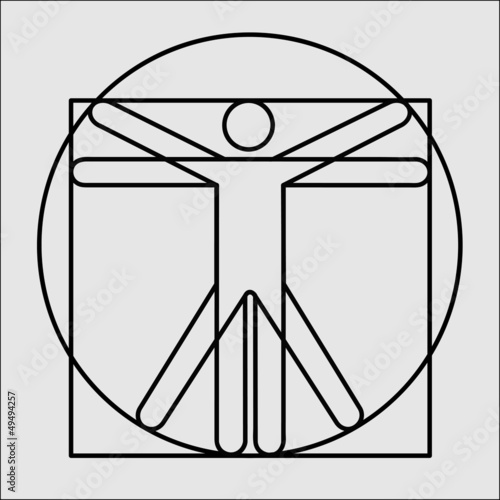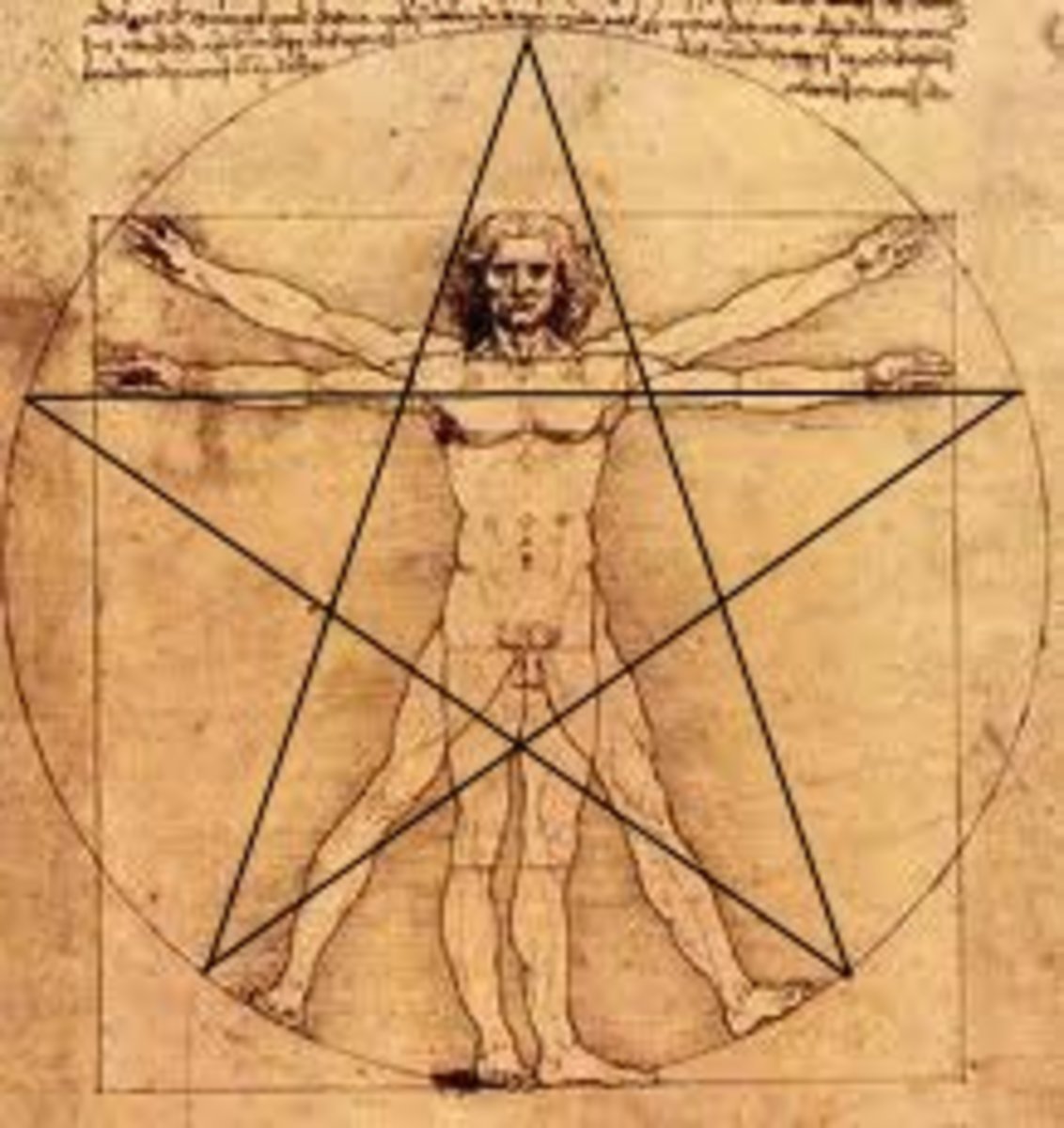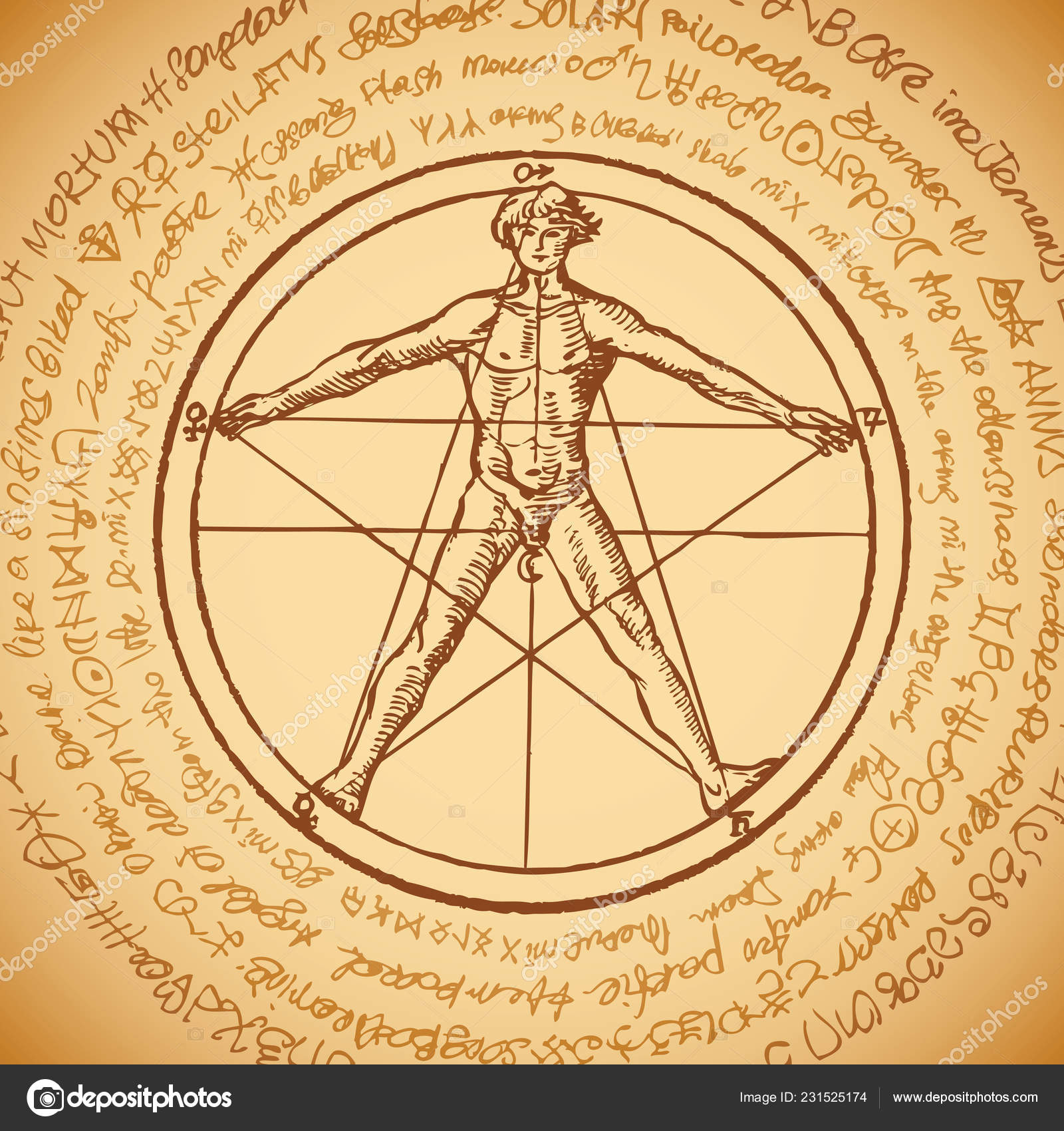
Vitruvian Mann Pentagramm Ohrringe Leonardo Da Vinci Etsy
Leonardo di ser Piero da Vinci (15 April 1452 - 2 May 1519) was an Italian polymath of the High Renaissance who was active as a painter, draughtsman, engineer, scientist, theorist, sculptor, and architect. While his fame initially rested on his achievements as a painter, he has also become known for his notebooks, in which he made drawings and notes on a variety of subjects, including.

"Vitruvian Man Pentagram Vintage Human Body Leonardo Da Vinci" Spiral Notebook by h44k0n Redbubble
In 1476, Leonardo da Vinci, on the verge of his twenty-fourth birthday, was named as one of four men who had practiced "such wickedness" with the seventeen-year-old apprentice of a local.

lichtachsen und pentagramme
As for the Mona Lisa, various X-ray analyses of the painting showed the presence of heavy elements within the poplar wood panel, which could mean that da Vinci used a lead-based pigment or an oil.

"Vitruvian Man Leonardo Da Vinci Agrippa Pentagram " Sticker by h44k0n Redbubble
Leonardo's "Self-Portrait" from circa 1510-13 is housed in the Biblioteca Reale, Turin. Leonardo signed off in his notebooks as "disscepolo della sperientia," which would be rendered in modern Italian as discepolo dell'esperienza (disciple of experience). Leonardo da Vinci may be best remembered as an artist, with his enigmatic "Mona Lisa.

Polyhedra of Leonardo da Vinci
Von allen geometrischen Gebilden, welche aus geraden Linien aufgebaut sind, kann das Pentagramm als das mit den hervorragendsten Eigenschaften bezeichnet werden. Ob geometrische Eigenschaft oder mathematische Beziehung seiner Seitenverhältnisse, fand Leonardo da Vinci bereits im Goldenen Schnitt, dem »Sectio aurea«, die bedeutende Rolle in der Natur, im menschlichen Körper sowie in der Kunst.

"Vitruvian Man pentagram human Leonardo da Vinci" Stock image and royaltyfree vector files on
Head of a Woman (1500-10) Head of a Woman (also called La Scapigliata), oil, earth, and white lead pigments on poplar wood by Leonardo da Vinci, 1500-10; in the National Gallery, Parma, Italy. Head of a Woman, a small brush drawing with pigment, depicts a young woman with her head tilted and her eyes downcast.

🖐️ The Vitruvian Man In Pentagram (Canvas Print) Geometry in nature, Sacred geometry
2. The secret of "The Last Supper". The Last Supper is a very popular religious scene painted by many celebrated artists. Unlike artists before and after him, Leonardo da Vinci chose not to put halos on Jusus Christ. Many art historians believe that Leonardo da Vinci believe in nature, not in God.

Open Problem Society Solving the Vitruvian Man
Leonardo da Vinci was an artist and engineer who is best known for his paintings, notably the Mona Lisa (c. 1503-19) and the Last Supper (1495-98). His drawing of the Vitruvian Man (c. 1490) has also become a cultural icon. Leonardo is sometimes credited as the inventor of the tank, helicopter, parachute, and flying machine, among other vehicles and devices, but later scholarship has.

The Vitruvian Man In Pentagram Digital Art by MysticaLink Pixels
Das Pentagramm und die fünf hauptsächlichen Ätherströmungen Leonardo da Vinci: Der vitruvianische Mensch, Proportionsstudie nach Vitruv 1492 Das Pentagramm als Bild der Kräfteströmungen im menschlichen Ätherleib Das Pentagramm in der spirituell korrekten Form. Da man das Pentagramm ohne abzusetzen in einem Zug zeichnen kann und dabei wieder an den Anfangspunkt gelangt, galt es in der.

Vitruvian man leonardo da vinci Imágenes vectoriales de stock Alamy
The pentagram or pentacle is one of the major symbols described by "symbologist" Robert Langdon in The Da Vinci Code. This article compares his claims about the symbol with reality. The sacred feminine is that other face of God that has not been honored over the two millennia of Christianity--at least not as a fully equal partner -- Margaret.

"Vitruvian Man Pentagram Vintage Human Body Leonardo Da Vinci" Poster by h44k0n Redbubble
Vitruvian Man, drawing in metalpoint, pen and ink, and watercolour on paper (c. 1490) by the Renaissance artist, architect, and engineer Leonardo da Vinci.It depicts a nude male figure with the arms and legs in two superimposed positions so that the hands and feet touch the perimeters of both a square and a circle. One of Leonardo's best-known works, the drawing has become an iconic image.

Leonardo Da Vinci Pentagramm 24+ Koleksi Gambar
Leonardo and his drawings. Born near the town of Vinci in 1452, Leonardo trained in the Florentine workshop of Andrea Verrocchio (1435-88). His first masterpiece was the unfinished Adoration of the Magi (1481, Uffizi, Florence). In 1481-2 he travelled to Milan to work for the Duke, where he painted the Virgin of the Rocks (Musée du Louvre.

The PYRAMID and the PENTAGRAM An occult secret revealed. HubPages
The Italian polymath Leonardo da Vinci (1452-1519) was the founding figure of the High Renaissance, and exhibited enormous influence on subsequent artists.Only around eight major works—The Adoration of the Magi, Saint Jerome in the Wilderness, the Louvre Virgin of the Rocks, The Last Supper, the ceiling of the Sala delle Asse, The Virgin and Child with Saint Anne and Saint John the Baptist.

Vitruvian Man Pentagram Stars Space — Stock Photo © Furian 51124153
Proportionen beim Goldenen Schnitt einer Strecke: = = + Der Goldene Schnitt (lateinisch sectio aurea „Goldener Schnitt", proportio divina „göttliche Proportion"), gelegentlich auch stetige Teilung einer Strecke, bezeichnet ihre Zerlegung in zwei Teilstrecken in der Weise, dass sich die längere Teilstrecke zur kürzeren Teilstrecke verhält wie die Gesamtstrecke zur längeren Teilstrecke.

Vector Banner Human Figure Vitruvian Man Leonardo Vinci Pentagram Hand Stock Vector Image by
The Vitruvian Man was created by Leonardo da Vinci around the year 1487. It is accompanied by notes based on the work of the famed architect, Vitruvius Pollio. The drawing, which is in pen and ink on paper, depicts a male figure in two superimposed positions with his arms and legs apart and simultaneously inscribed in a circle and square.

Pentagramm AnthroWiki
The Vitruvian Man (Italian: L'uomo vitruviano; [ˈlwɔːmo vitruˈvjaːno]) is a drawing by the Italian Renaissance artist and scientist Leonardo da Vinci, dated to c. 1490.Inspired by the writings of the ancient Roman architect Vitruvius, the drawing depicts a nude man in two superimposed positions with his arms and legs apart and inscribed in both a circle and square.